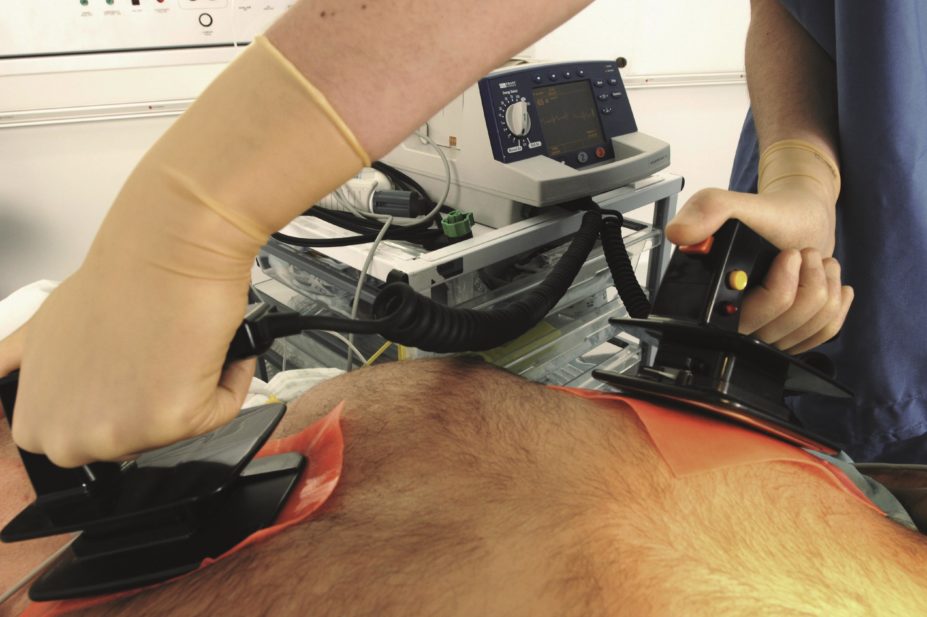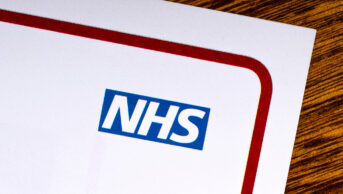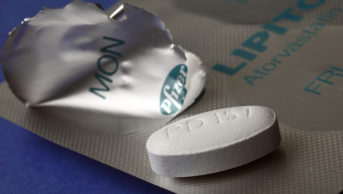
Medicimage / UIG / Rex Features
Summary
In this article you will learn:
- How stroke risk should be assessed in patients with AF
- Which patients with AF require anticoagulant therapy
- The latest recommendations from NICE on rate and rhythm control in AF
Atrial fibrillation (AF) is
the most common cardiac arrhythmia. It is characterised by the disruption of electrical impulses in the atria of the heart, which results in a rapid and irregular heart rhythm. AF can be asymptomatic, but can also lead to symptoms including palpitations, breathlessness, dizziness or light-headedness, and chest discomfort.
The prevalence of AF in adults is around 1%. The risk of developing AF increases with age, with prevalence increasing to more than 9% in patients older than 85 years[1]
[2]
. It is more common in men.
AF is one of the ten most common causes of hospital admission in the UK[3]
. Patients with AF accounted for 5.7 million NHS bed-days in 2008, at a cost of £1.8bn. In addition, the direct costs associated with AF-related strokes are estimated to be up to £750m per year[4]
.
In June 2014, the National Institute for Health and Care Excellence (NICE) issued new clinical guidance on the management of AF[5]
. NICE now recommends that patients with AF are offered personalised packages of care to ensure they receive adequate education to help them make informed decisions about their treatment. The NICE guideline also discusses the importance of referring patients for specialist advice promptly when symptoms remain uncontrolled despite treatment.
Stroke prevention
The failure of the atria to pump efficiently allows blood to pool and can lead to the development of thrombi. When thrombi move from the heart to the brain, stroke occurs. AF-related strokes are associated with higher mortality rates and more significant disability than non-AF related strokes; therefore stroke prevention is a major part of AF management.
The NICE guideline introduces major changes to stroke risk assessment in patients with AF. NICE has now endorsed the use of CHA2 DS2 VASC to calculate stroke risk and HAS-BLED to assess risk of bleeding with anticoagulation (see Tables 1 and 2).
CHA2 DS2 VASc risk assessment should be undertaken for all patients with paroxysmal, persistent or permanent AF, those with atrial flutter and those who have converted back to sinus rhythm but are at risk of arrhythmia recurrence. All patients with a CHA2 DS2 VASc score of 2 or more should be offered oral anticoagulation, taking into account bleeding risk. In addition, anticoagulant therapy should also be considered for men with a CHA2 DS2 VASc score of 1.
| Table 1: Calculating CHA2 DS2 VASc score for stroke risk | |
|---|---|
| Source: www.chadsvasc.org | |
Risk factors | Score |
Congestive heart failure | 1 |
Hypertension | 1 |
Age ≥ 75 years | 2 |
Age 65-74 years | 1 |
Diabetes mellitus | 1 |
Stroke, transient ischaemic attack or thromboembolism | 2 |
Vascular disease | 1 |
Female | 1 |
The HAS-BLED score should be used to assess overall bleeding risk for patients who require anticoagulation. Any modifiable risk factors for bleeding — such as uncontrolled hypertension, labile international normalised ratio (INR), concomitant use of non-steroidal anti-inflammatory drugs or aspirin, and excess alcohol intake — should be identified and addressed.
Patients with HAS-BLED scores greater than 3 who are at risk of stroke or falls should still receive anticoagulant therapy if required[4]
, but may need closer follow-up to ensure modifiable bleeding risk factors are well controlled.
| Table 2: Calculating HAS-BLED score for bleeding risk | |
|---|---|
| Source: www.chadsvasc.org | |
Clinical characteristic | Points awarded |
Uncontrolled hypertension | 1 |
Abnormal liver function | 1 |
Abnormal renal function | 1 |
Previous history of stroke | 1 |
Bleeding history or predisposition | 1 |
Labile international normalised ratio (INR) | 1 |
Elderly (aged ≥ 65 years) | 1 |
Antiplatelets or non-steroidal anti-inflammatory drugs | 1 |
Alcohol use (over 8 units week) | 1 |
NICE endorses the use of apixaban, dabigatran, rivaroxaban or a vitamin K antagonist, such as warfarin, for the prevention of stroke in patients with AF. The choice should be based on each patient’s clinical features and preferences.
Patients treated with a vitamin K antagonist should have their INR time in therapeutic range (TTR) calculated regularly and anticoagulation should be reassessed if, within a six month period:
- the TTR is less than 65%
- the patient has had one INR above 8 or two INRs above 5
- the patient has had two INRs less than 1.5.
Reassessment should take into account cognitive function, adherence, illness, drug interactions and any lifestyle factors that may have affected INR control. If control cannot be improved, alternative anticoagulation strategies should be considered.
All patients taking an oral anticoagulant should have their need for anticoagulation reassessed at least annually, taking into account the benefit in terms of stroke prevention balanced against the potential risk of bleeding.
Aspirin monotherapy should not be used to reduce stroke risk in AF. If anticoagulation is contraindicated or not tolerated, surgical insertion of a left atrial appendage closure device may be considered (the left atrial appendage is often the location of blood clot formation in AF).
Rate and rhythm control
NICE recommends rate control with a beta-blocker or rate-controlling calcium channel blocker (e.g., verapamil, diltiazem) as first-line therapy for all patients except those with reversible cause for AF, heart failure, new-onset AF, atrial flutter suitable for ablation therapy or where a rhythm control strategy may be preferred based on clinical judgement.
If rate is not controlled on monotherapy, a combination of two of the following medicines should be considered:
- A beta-blocker
- Diltiazem
- Digoxin
If rate cannot be controlled on dual therapy or symptoms persist despite rate control therapy, a rhythm control strategy using pharmacological or electrical cardioversion should be considered. Patients may receive pre-treatment of amiodarone for four weeks to improve the effectiveness of electrical cardioversion.
If drug therapy is required for long-term rhythm control, a standard beta-blocker (i.e. not sotalol) is recommended first-line. If beta blockers are contraindicated or ineffective, the use of other antiarrhythmics should be considered.
Comorbid conditions can affect treatment choice. For example, amiodarone is an option for people with left ventricular dysfunction or heart failure, and flecainide and propafenone should be avoided in patients with ischaemic or structural heart disease. Dronedarone remains an option for patients with non-permanent (paroxysmal or persistent) AF in line with earlier NICE guidance[6]
.
Drug treatment may not be required for patients with paroxysmal AF and patients whose AF is known to be triggered by precipitating factors, such as drinking caffeine or alcohol. A “pill in the pocket” strategy (when an anti-arrhythmic medicine is carried by a patient to be taken in the event that an episode of paroxysmal AF occurs, avoiding the need for regular rhythm contr
ol therapy) should be considered for patients with infrequent paroxysms and minimal associated symptoms to deal with paroxysms as they occur. Interventional strategies, including catheter ablation or surgical ablation, should be considered if drug treatment has failed to control symptoms.
Helen Williams
is consultant pharmacist for cardiovascular disease at Southwark Clinical Commissioning Group.
References
[1] Lip GY & Tse HF. Management of atrial fibrillation. The Lancet 2007;370(9587):604-618.
[2] Lafuente-Lafuente C, Mahe I & Extramiana F. Management of atrial fibrillation. BMJ 2009;339:b5216.
[3] Department of Health. National Service Framework Chapter 8: Arrythmia and sudden cardiac death. March 2006. London.
[4] Atrial Fibrillation Association. Keeping our finger on the pulse: Why the UK must address the personal, clinical and economic impact of atrial fibrillation. June 2010.
[5] National Institute for Health and Care Excellence. Atrial fibrillation: Management of atrial fibrillation. June 2014 [online]. Available from: www.nice.org.uk/guidance/cg180
[6] National Institute for Health and Care Excellence. Dronedarone for the treatment of non-permanent atrial fibrillation. December 2012 [online]. Available from: www.nice.org.uk/guidance/ta197


